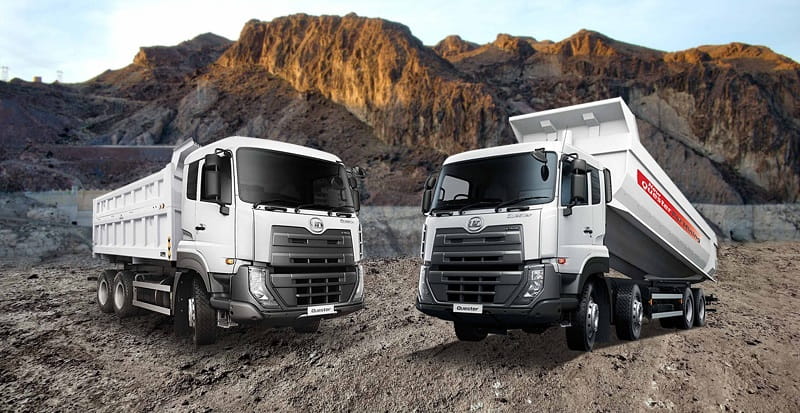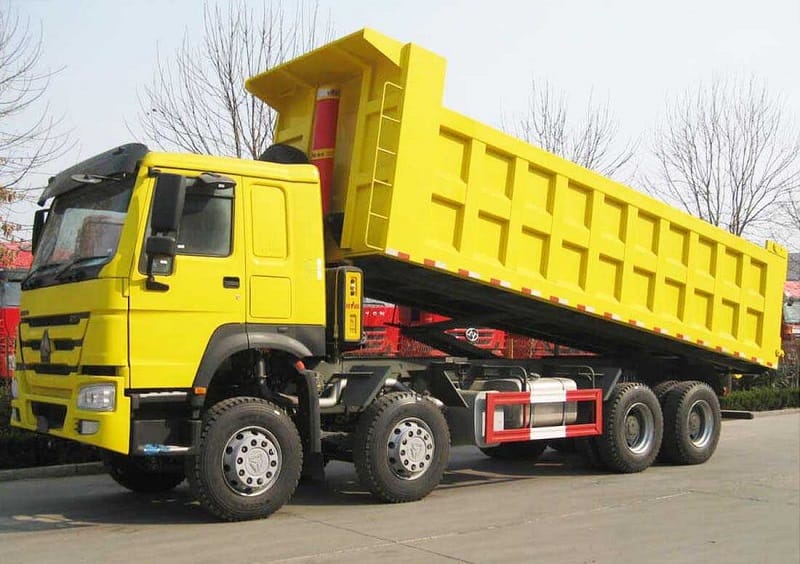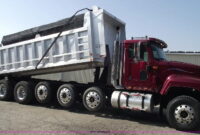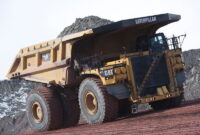Dump Truck Size in Meters: A Comprehensive Guide catdumptruck.com | Dump trucks are essential vehicles in construction, mining, and transportation industries. Their main function is to carry and unload heavy materials like sand, gravel, demolition debris, or coal.
However, not all dump trucks are the same. They vary greatly in size, capacity, and design, depending on their application.
Understanding the size of dump trucks in meters helps ensure safety, efficiency, and suitability for specific job requirements.
In this article, we’ll break down the typical dimensions of various types of dump trucks, explain the factors that affect size, and highlight the importance of choosing the right size for your project.
Read More: Dump Truck Size in Yards: A Complete Guide
Dump Truck Size in Meters: A Comprehensive Guide
1. Overview of Dump Truck Types
Before diving into dimensions, it’s important to recognize the main categories of dump trucks. Each type has its own standard size range:
- Standard Dump Trucks
- Articulated Dump Trucks (ADTs)
- Transfer Dump Trucks
- Super Dump Trucks
- Off-Highway Dump Trucks / Mining Trucks
Each of these serves different operational needs and operates in various environments—from urban streets to deep mining sites.
2. Standard Dump Truck Size in Meters
Standard dump trucks are the most commonly seen on construction sites and urban roads. These vehicles have a fixed bed that is lifted by a hydraulic ram.
Typical size in meters:
- Length: 6 to 8 meters
- Width: 2.4 to 2.6 meters
- Height: 2.5 to 3.5 meters
These measurements can vary slightly based on brand and model, but most standard dump trucks are designed to meet road regulations, especially in countries with strict transportation laws.
Capacity: Typically between 10 and 16 cubic meters.
3. Articulated Dump Truck Size in Meters
Articulated Dump Trucks (ADTs) are designed for rough terrain and off-road use. They consist of two parts: a tractor unit and a trailer connected with a pivot joint.
Typical size in meters:
- Length: 9 to 12 meters
- Width: 3 to 3.5 meters
- Height: 3.5 to 4 meters
- Capacity: 20 to 35 cubic meters, or up to 40 tonnes of material.
Because of their articulation, they can maneuver in tight spaces and uneven terrain, making them ideal for mining and large-scale excavation projects.
4. Transfer Dump Truck Size
A transfer dump truck is a standard dump truck pulling a separate trailer with a movable cargo container, allowing for extra load capacity without sacrificing maneuverability.
Typical size in meters:
- Combined Length: 10 to 15 meters
- Width: 2.6 to 3 meters
- Height: 3.5 to 4 meters
- Capacity: Up to 20 cubic meters.
Transfer dump trucks are useful in locations where volume matters but space still requires some degree of compactness. Their versatility makes them popular in large infrastructure projects.
5. Super Dump Truck Dimensions
A super dump truck is an enhanced version of a standard dump truck with additional axles for greater weight distribution. It often has a trailing axle that extends far behind the truck.
Typical size in meters:
- Length: 10 to 12 meters
- Width: 2.5 to 2.6 meters
- Height: 3.5 to 4 meters
- Capacity: Up to 26 cubic meters or 35 tonnes.
The added capacity makes them a favorite for high-volume hauls on paved roads, especially in asphalt delivery and roadwork.
6. Off-Highway and Mining Dump Trucks
These are the largest dump trucks in the world, built for mining and heavy-duty earthmoving. They are not legal for road use due to their massive size.
Typical size in meters:
- Length: 12 to 15 meters
- Width: 6 to 8 meters
- Height: 5 to 7 meters
- Capacity: Up to 360 tonnes or more.
Examples include:
Caterpillar 797F:
- Length: ~15.1 meters
- Width: ~9.7 meters
- Height: ~6.5 meters
BelAZ 75710 (one of the largest):
- Length: 20.6 meters
- Width: 9.87 meters
- Height: 8.16 meters
- Payload capacity: 450 tonnes
These trucks are specially engineered for open-pit mining operations and massive-scale construction.
7. Factors Influencing Dump Truck Size
Several factors determine the overall dimensions and design of a dump truck:
- Purpose: A truck used for city construction will be smaller and more agile, while one used in mining will prioritize load size.
- Load Type: Wet or dense materials like clay require sturdier, often larger trucks compared to sand or gravel.
- Road Regulations: In most countries, road-legal dump trucks must comply with width and height restrictions.
- Terrain: Off-road applications demand more robust, wider trucks with higher ground clearance.
8. Why Size Matters
Choosing the right size of a dump truck is crucial for:
- Efficiency: Right-sizing your truck helps move the maximum load per trip, saving time and fuel.
- Safety: Oversized trucks on small roads or unstable ground pose serious risks.
- Cost: Larger trucks cost more to buy, fuel, and maintain. Matching the truck size to the job avoids unnecessary expenses.
- Project Speed: The correct truck size can significantly speed up excavation or haulage tasks.
9. Measuring Dump Truck Size Accurately

If you’re assessing a dump truck’s size for project planning, consider these steps:
- Measure Length: From the front bumper to the end of the dump bed.
- Measure Width: From the widest points of the truck (usually tire-to-tire or mirror-to-mirror).
- Measure Height: From ground to the top of the cab or dump bed in its resting position.
- Check Volume: Measure the bed’s length, width, and depth to calculate capacity in cubic meters.
- Note: Dump bed capacity does not always equal payload due to weight limits.
10. Conclusion
Dump truck size in meters varies dramatically based on type, function, and design. Whether it’s a standard road-legal dump truck around 7 meters long or a colossal mining behemoth over 15 meters, each model serves a specific role in construction and transport.
Understanding dimensions helps ensure that you’re using the right truck for the right job. It also promotes safety, improves productivity, and reduces overall project costs.
Whether you’re purchasing, renting, or managing logistics, knowing these sizes in metric units (meters) will give you a major advantage in planning and execution.
- Dump Truck Size in Meters: A Comprehensive Guide - April 26, 2025
- Dump Truck Size in Yards: A Complete Guide - April 26, 2025
- Mining Dump Truck Size: A Detailed Overview - April 26, 2025





